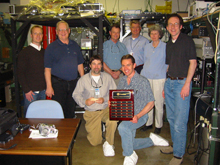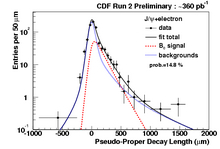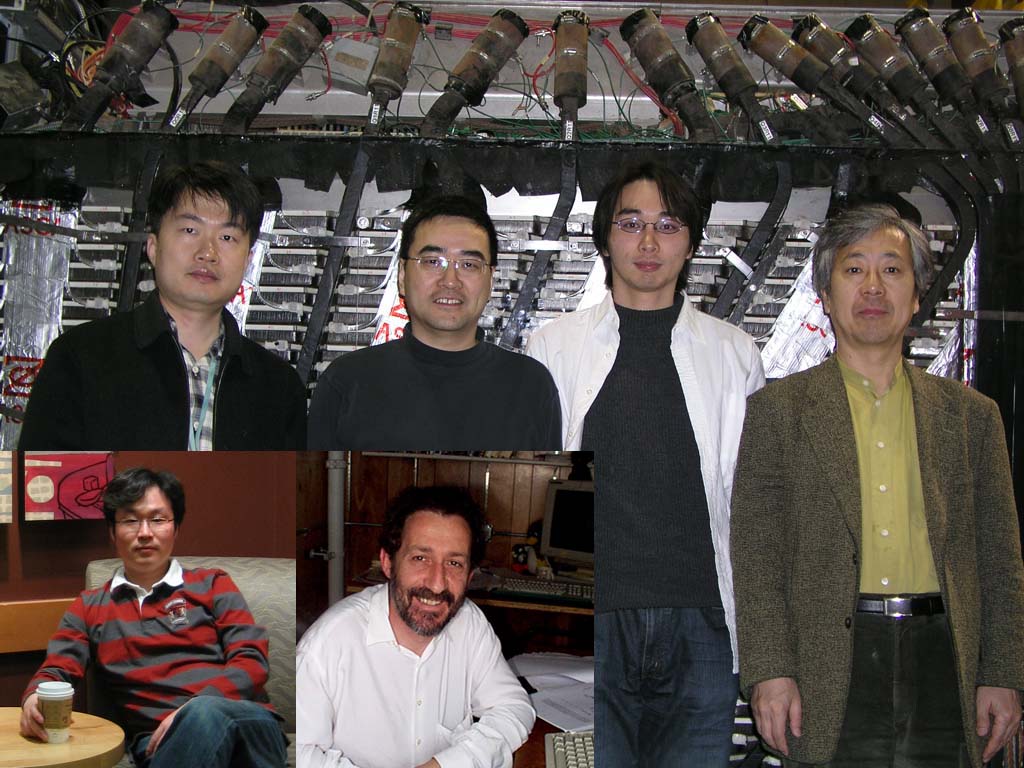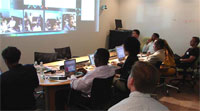 | Thursday, May 18, 2006 |
|
Thursday, May 18 2:30 p.m. Theoretical Physics Seminar - Curia II Speaker: M. Stephanov, University of Illinois, Chicago Title: AdS/QCD 3:30 p.m. DIRECTOR'S COFFEE BREAK - 2nd Flr X-Over 4:00 p.m. Accelerator Physics and Technology Seminar - 1 West Speaker: D. Moehs, Fermilab Title: Ion Source Choices, an H-Source for the High Intensity Neutrino Source
Friday, May 19 |
|
Extended Forecast |
Secon Level 3 |
|
Thursday, May 18 -Southwestern Chicken Tortilla -Philly Style Cheese Steak -Chicken Pot Pie -Tomato Basil Chicken Parmesan -Southwestern Turkey Wrap -4 Cheese Pizza -Marinated Grilled Chicken Caesar Salads |
|
Thursday, May 18 Dinner -Fresh Mozzarella & Tomato Salad -Garlic Shrimp w/Red Peppers & Wild Mushrooms -Lemongrass Rice -Brandi Flan
Wednesday, May 24
Chez Leon Menu |
| Fermilab Today is online at: http://www.fnal.gov/today/ Send comments and suggestions to today@fnal.gov Fermilab Today archive Hurricane Relief Page Fermilab Today PDF Version Fermilab Result of the Week archive Fermilab Safety Tip of the Week archive Linear Collider News archive Fermilab Today classifieds Subscribe/Unsubscribe to |
| DOE Review Poster Display |
Each year, Fermilab researchers pull out the posterboard and think up colorful ways to summarize their research for the Annual DOE Program Review. This year's posters are on display now through May 22 on the 15th floor, and they provide an excellent overview of the research happening at Fermilab. If you can't get away from the desk, you may view a sampling of the 33 posters here.
|
| How big is big? Probing the conditions of the universe on the largest scales | SDSS Press Release, May 15 Since the 1970s, astronomers have discovered structures in the three-dimensional distribution of galaxies on ever larger scales, up to hundreds of millions of light years. Today, researchers from the Sloan Digital Sky Survey (SDSS-II) announced the first measurements of galactic structures more than a billion light years across. Read more... |
| Fermilab featured in Scientific American Podcast yesterday |
In a Podcast yesterday, Scientific American edtior Mark Alpert spoke to host Steve Mirsky about his
experience visiting Fermilab and going inside the Tevatron. You can read a summary and listen to the podcast here.
|
|
New York Times May 18, 2006: Renewing America's Commitment to Research in High-Energy Physics In October 2003, I gave an evening talk at the Fermi National Accelerator Laboratory in Batavia, Illinois. The subject was nature on the familiar scale, the kind embodied in the restored prairie on the Fermilab campus - some 1,200 acres of compass plant and rattlesnake master and other species. But it's impossible to visit a place like Fermilab without thinking about nature on another dimension, the subatomic one being studied in the Tevatron collider, which looks from the sky like an enormous, moated ring.
In the Tevatron, subatomic particles are accelerated to extremely high speeds and crashed into each other within a detector chamber. That afternoon, I clambered through the scaffolding around the detector chamber as scientists tried to explain to me what it all meant. To me it looked like an incomprehensible array of electronics several stories high. The detector's purpose is to capture a computerized image of the debris of each antiproton-proton collision. The particles that emerge - varieties of quarks and mesons, for instance - seem at first to have nothing to do with nature as we know it on the human scale.
|
| Beauty and Charm are fleeting | ||
| ||
|
The Bc meson is a particle possessing both
charm and beauty. Formed from a beauty and a charm quark, the
Bc is expected to be the heaviest meson with distinct
quarks. A key question for physicists is how long this unstable meson
will exist before decaying. The answer will provide insight as to how
heavy quarks can form together and how they interact. The
Bc meson was discovered by CDF in 1998 with only 20
Bc signal events, not enough to measure the lifetime.
Run 2 at the Tevatron is the only place which can
provide the opportunity for this lifetime measurement. CDF has recorded the largest number of Bc events in the world, by taking advantage of its speedy online filtering system that selects events consistent with b meson decay by carefully tracking the particles in the silicon vertex detector and central tracker. The most recent Run-II Bc lifetime measurement is obtained from events where the Bc decays to an electron and another meson called a "J/Psi," which is a charm quark plus an anticharm quark. Using selection criteria based on this unique signature, CDF finds a Bc signal of 238 events. The lifetime of the Bc was measured to be 0.463 ± 0.069 ± 0.036 10-12 seconds, the most precise Bc lifetime result to date. The precision of this result begins to reach the level needed to separate various theoretical models of quark interactions, and will improve as more Run 2 data is collected. | ||
| ||
| Result of the Week Archive
|
Extending the Grid by 'EPIC' Proportions
| ||
|
Success in the knowledge age requires cyberinfrastructure-
computing resources, applications for research and learning, data repositories and tools for data analysis and long-distance collaboration.
Read More |
|
C++ Classes offered June 5 On June 5, Fermilab will offer the first session of Accelerated C++: A Short Course in Practical Programming by Example. Course registration is now open. Course Announcement and Syllabus.
Batavia Road entrance closed to cars and bicycles
Power Outage |



